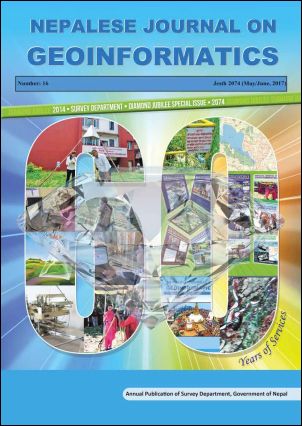Impervious Surface Detection in Semi-Urban Environment Using Lidar Data and High Resolution Aerial Photographs
DOI:
https://doi.org/10.3126/njg.v16i1.51424Keywords:
Land use, land cover, impervious surface, semi-urban, object oriented classification, AustraliaAbstract
Land use information plays a vital role in effective management of natural resources in any country. It helps manage water, soil, nutrients and plants, animals and provides relationships between land use dynamics, economics and social conditions both in urban and rural areas. The land use and land cover mapping is always a dynamic issue in every country because of the dynamic nature of the land use. Knowledge of land use change patterns has important implications in sustainable development and sustainable environmental management. Impervious surfaces are generally defined as any anthropogenic materials that water cannot infiltrate. Increase in impervious land in urban area is causing high accumulation of storm water during the wet season and causing widespread flooding.This research develops an improved method for impervious land use detection using object–oriented classification system. Although pixel-based approaches have certain strong merits and remain in widespread use, operating at the spatial scale of the pixel can have major drawbacks. Foremost among these is that a pixel’s spatial extent may not match the extent of the land cover feature of interest. That is pixel’s spatial extent may not match the extent of the land cover feature of interest-the problem of mixed pixels may lead to misclassification. Also, when object of interest is considerably larger than the pixel size such as VHR images, urban area comparisons show that the object oriented approach is superior to pixel based approach in terms of accuracy. Object Oriented classification technique is used to separate urban and non-urban features. Negative values of NDVI helped to classify impervious area. Non elevated impervious surfaces are well addressed by NDVI threshold. LiDAR data is used to separate elevated impervious area. By and large, the research shows that impervious land in urban area can be detected using the developed technique with satisfactory accuracy.




